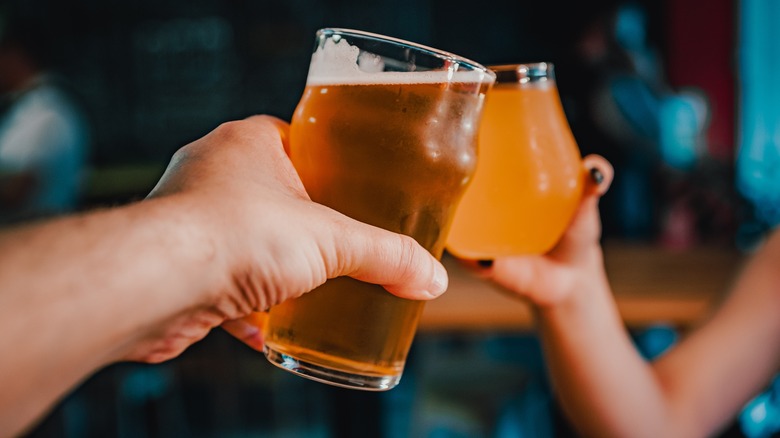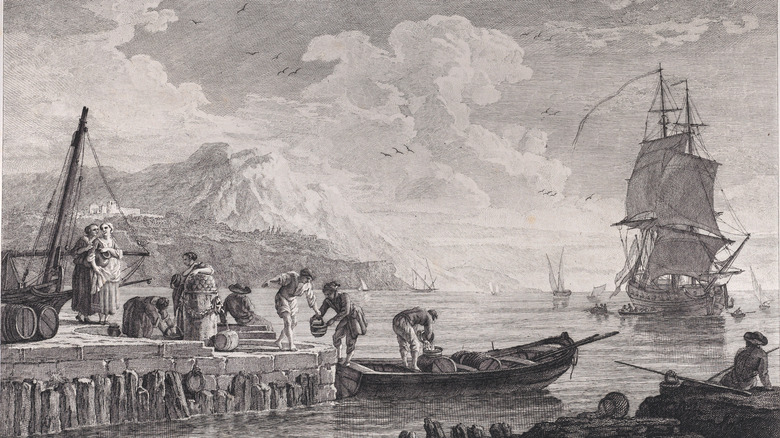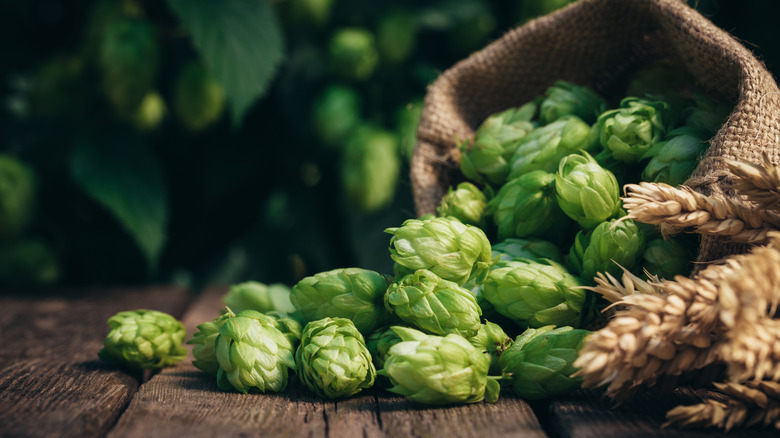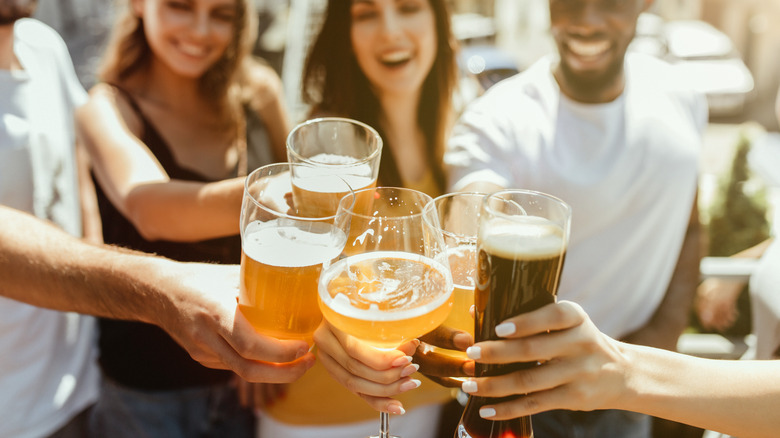Do You Drink IPAs Warm Or Cold?
Cracking open a cold one at the end of a work day is a common comfort for beer drinkers. With the usual lagers and ales, packing a cooler of brews for the beach or reaching into the fridge for a bottle makes perfect sense. Beer is just a refreshing drink when it's served cold — simple as that.
However, when it comes to the wide world of brews, India Pale Ales are a whole different beast. It's not uncommon for a beer lover to despise IPAs. The beer variety is rising in popularity for some niche audiences that prefer its bitter taste, which is due to the higher hops content per Beer and Brewing. With this unique style of beer comes new rules for indulging and plenty of questions about its makeup.
You may wonder what an IPA is, exactly. Does it have more alcohol in it than other beers? What are the best brands? Well, there's one important question you should be asking that most people don't even think about. What is the ideal temperature for an IPA? The answer isn't as simple as you think.
The rich history of the India Pale Ale
For those that have been in the beer game for a long time, IPAs might seem like the new kid on the block. The very first barley beers popped up back around 3400 B.C. thanks to the Sumerians of ancient Mesopotamia (per History), while IPAs didn't show until the 18th century (via Smithsonian Magazine). Although both beers have technically been around a long time, IPAs haven't been nearly as popular as over these last 20 years per CNBC.
The IPA has its origins in the 18th century back when the British army occupied India (via Smithsonian Magazine). The British army felt frustrated with the lackluster beer being shipped over to them from London. Stuck in the sweltering heat, they had nothing but heavy, dark beers to indulge in. Most of these brews were porters packed into the hull of ships which usually diminished in quality after the six-month sail from England. As the British army's frustration grew, their provider, George Hodgson's Bow brewery, decided to experiment with better ways of preserving the beer for the journey.
Skipping out on the porters in 1822, Hodgson's brewery eventually offered up a few cases of a strong, pale beer called barleywine. Also known as "October beer," it was initially thought of as a luxury reserved for special occasions. The beers brewed especially syrupy and had to age for years to mellow out. And to keep them tasting fresh, they were loaded with freshly-picked hops.
An IPA for all
George Hodgson's brewery figured a beer chock-full of hops (a known preservative) could surely withstand the passage to India. And according to Smithsonian Magazine, it did. With its strong, refreshing taste, the British army loved the new beer. The product became so successful that others in London tried to replicate it but were met with strong opposition from Hodgson's brewery. Eventually, in the late 1820s, East India Company director Campbell Marjoribanks grew tired of the monopoly. He went to Hodgson's rival Allsopp with a bottle of October beer and demanded a recreation. Allsopp agreed to try.
Job Goodhead, Allsopp's maltster, found the finest barley he could, lightly kilned it, and purportedly steeped the first batch in a tea kettle. The result was a subtly sweet "white malt" that was amber in color and had a soft, bitter bite. It was an India Pale Ale.
The drink mellowed out more as time went on, and the many different types of beer and IPA styles we know today appeared when it was revived by Americans in the 1970s (via The Guardian). But the base ingredients remain the same. Most people continue to think consuming these guys cold is a no-brainer — a cool, refreshing drink is what the British army was looking for, after all. Chances are you're not consuming beer transported in the bottom of a wooden ship, so it may be time you started considering a new temperature for your beer.
Try your IPAs at a warmer temperature
According to Bon Appétit, a British IPA is just one style of the beer variety. Although you might be used to drinking iced-cold beers, IPA drinkers should reconsider. Unlike most wheat beers, IPAs are not best when served chilled due to their unique makeup. IPAs contain more hops than most other beers and they intensify as the beer warms. According to Beer and Brewing, that means you should serve an IPA at around 50 degrees Fahrenheit to preserve its flavors. Others even say going as high as 55 degrees Fahrenheit is ideal (via VinePair).
Experienced brewer Doug Hasker weighed in on temperature's role in an IPA's complex taste (via The Takeout). "For IPAs, a little bit warmer beer ensures you will taste all that beer has to offer. All components will be more subdued at colder temperatures, whether malt, yeast, or hops," said Hasker. Marty Scott, the barrel program manager at Revolution Brewing, stressed the importance of reaching a happy medium in temperature. "Most beers, and IPAs in particular, will become more expressive as increasing temperatures drive CO2 evolution and hop compound volatilization from the liquid," Scott said. "Too cold, and you won't experience the maximum flavor/aromatic intensity locked in fragile solution. Too warm, though, and your nice refreshing cold beer is anything but."
So even if you don't consider IPAs the best beer on the planet, don't write it off completely just yet — just try it at a warmer temperature.



